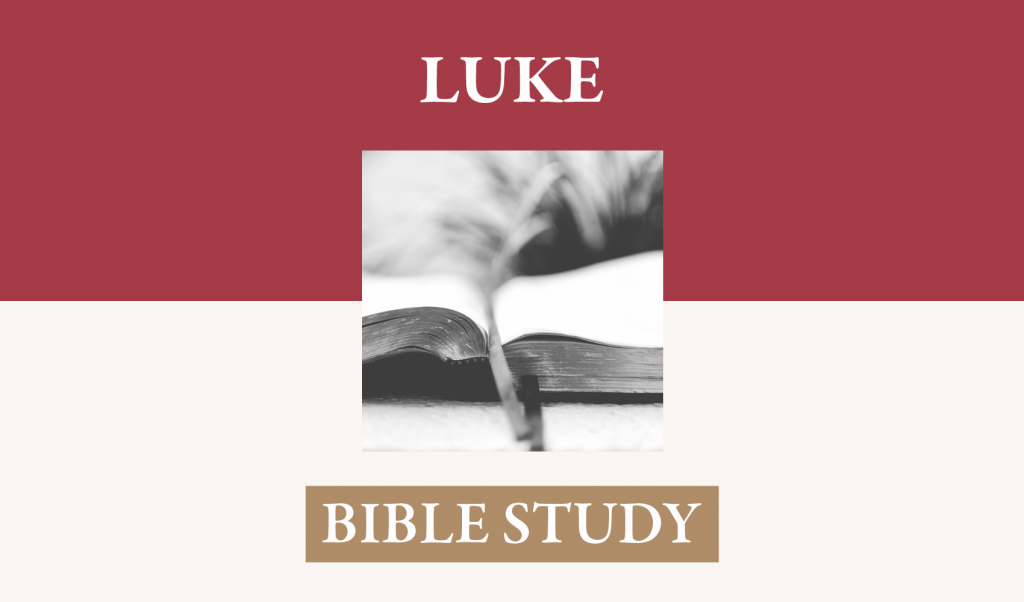I. Notice the great interest engendered among the Pharisees and teachers of the law “every village.” Luke gives indefinite introductions to the pericope in Luke 5. “Now it happened,” 5:1; “While he was in one of the cities” 5:12; “One day he was teaching; and there were some Pharisees etc”, 5:17; “On a Sabbath,” 6:1; “On another Sabbath,” 6:8
A. It is difficult for us to envision just how phenomenal the teaching and activities of Jesus were. News of him spread throughout the regions of his itinerancy and people made special trips to be in places where he would teach. On this occasion, his hearers had “come from every village of Galilee and Judea and from Jerusalem.” Compare 6:17, “a great throng of people from all Judea and Jerusalem and the coastal region of Tyre and Sidon.” In the great crowd were some who had come for his teaching and probably were even at this time seeking some way to catch him in what they would consider an error. Jesus would not disappoint them.
B. Jesus intrinsically had the power to heal and give life from the dead. In addition, in his manhood, he was anointed with the Spirit without measure (John 3:34) both to speak the words of God and to operate with unfettered spiritual power and authority. This phrase, “and the power of the Lord was present for him to perform healing” (cf. 6:19) relates to the reality of the singularity of Jesus’ person—both the fullness of human nature and the fullness of divine Sonship in this one person—so that his relationship to the Spirit in his manhood was unhindered by any corruption of heart or actual transgression. Also, as God, his personal power and authority would arise from the eternal unity of essence and power and purpose in the godhead (See 9:1). “My Father is working until now, and I am working.” “For as the Father has life in himself, so he has granted to the Son also to have life in himself” (John 5: 17, 26).
II. Notice the zeal and confidence of the friends of the lame man (Verses 18, 19). Matthew Henry observed, “In our applications to Christ, we must be very pressing and urgent: That is an evidence of faith.”
A. Some were there to benefit from the teaching of Jesus and bask in his clear truthfulness and wisdom in his exposition of Scripture. Others were there to catch him in his words in order to bring accusations against him (21, 30; 6:11; 7:30). It was a matter of widespread knowledge as well as invincible hope that Jesus’ teaching was done in tandem with healing (6:18).
B. A group of zealous and trusting men brought a paralyzed friend to Jesus. They did not doubt either that Jesus could heal him or would heal him. They worked to press through the crowd in order to “set him down in front of” Jesus. This proved to be impossible because of the size and density of the crowd as well as the unwieldy task of bringing a man on a stretcher into such a mass of people.
C. Undaunted, valuing a man and his well-being above their comfort, they took him to the roof of the house, removed tiles strategically, and lowered their friend into the midst of the crowd that stood immediately in front of Jesus. They were determined not to stop sort of the blessing they sought. Only Jesus would suffice; staying away would do no good. Zacchaeus climbed a tree; the woman with the issue of blood pressed through a crowd to touch the hem of Jesus’ garment. Bartimaeus cried even louder. Mary chose the better part. Paul counted all things as loss.
III. Jesus immediately gave him the gift that was the ultimate purpose of his coming, forgiveness.
A. We are forgiven of sin on the basis of faith in the person and work of Christ. “Believe on the Lord Jesus Christ, and you will be saved,” Paul told the jailer at Philippi (Acts 16). Those who believe will not perish but will have eternal life (John 3:16). Jesus discerned that the zeal of these men, the carriers and the paralytic himself, demonstrated that they saw in Christ not only a healer but the very power and grace of God in their presence. We find this same God-given love for Christ and faith in him described in 7:36-40.
B. The ultimate purpose of faith is to unite with Christ in his saving work. Jesus went immediately to the most fundamental issue, the need for forgiveness of sins. He declared, therefore, “Friend, your sins are forgiven you.” Disease, death, and damnation come from the fall of humanity into sin through Adam. Believers will be freed from the condemnation of sin, overcome death, and receive glorified bodies through Christ Jesus the Lord. The cause of all of these is sin. Jesus, therefore, before accomplishing the healing and giving wholeness to the paralytic’s body, removed the cause. When the cause is gone, all of the effects will certainly be removed. Alexander MacLaren commented, “No tinkering with superficial discomforts, or culture of intellect and taste, or success in worldly pursuits, will avail to stanch the deep wound through which our life blood is ebbing out. . . . It is useless to give a man dying of cancer medicine for pimples.”
IV. The issue of the divine prerogative of such an act immediately comes to the front (Verses 21-23).
A. Looking for a stumble from Jesus, the heresy-hunters found the ultimate error had been committed. He forgave sins. This is, of course, true blasphemy if the prerogative is feigned by a mere man. The apostles were to proclaim forgiveness of sins and declare them remitted on the basis of their preaching of the gospel and the evidence of genuine faith in Jesus (Matthew 16: 16-20; Acts 5:29-32; 13:38 ). But Jesus claimed the prerogative and power for himself.
B. Jesus knew their reasoning, accusing him of blasphemy in their hearts. Also, he knew that they would not believe even in the face of empirical evidence (See John 10:37-39). He would provide it in order to demonstrate that his first act of grace to the man, forgiveness, was indeed a fact, and that the problem was not a lack of evidence but stone-cold hearts, blinded eyes, perverse intention, and invincible malice. They would not believe even if one rose from the dead (Luke 16: 29-31; John 5: 45-47).
C. Jesus proposed a conundrum. “Which is easier, to say, ‘Your sins have been forgiven you,’ or to say, ‘Get up and walk’?”
- If immediate evidence is the test of this difficulty, then the latter command is harder. They would know immediately if he did or did not have power.
- Forgiveness of sins, however, is not easy to see and so is easier to say without fear of being disapproved.
- Forgiveness of sins, however, though easier to say is harder to do; impossible, in fact, for any but God, and only for him in light of a vicarious and effectual payment of the moral debt that sin accumulates.
- Jesus, therefore, in his engagement with the Pharisees, indicated that he would do the easier, yet the more visible, in order to demonstrate his power to do the more difficult, but invisible. “But, so that you may know that the Son of Man has authority on earth for forgive sin”—then Jesus turned his attention to the paralytic, “I say to you . . .” Alexander MacLaren commented, “It was a demonstration in the visible sphere of Christ’s power in the invisible. Both were divine acts, and that which could be verified by sight established the reality of that which could not.”
- In forgiving the sins of this man and of all others to whom he gave that grace, Jesus committed himself to the road to Calvary. He could not freely pardon were he not going to bear their sins in his own body on the tree.
V. (Verses 24, 25) Jesus heals the man to show that even as Son of Man he retains divine authority.
A. To give empirical evidence, therefore of his divine power, Jesus issued the harder thing to say: “I say to you, get up, and pick up your stretcher and go home.” This would demonstrate not only his personal authority and power to heal—“I say to you”—but would show the removal of an effect and thus the demolition of the cause.
B. The effect of the words of Jesus were immediate and perfectly fulfilled. Not only did he walk, but he picked up his former conveyance and conveyed it to his home, never to have need of it again. He did not doubt either his forgiveness or his healing. Both were from God and he had met God face to face in the person of Jesus of Nazareth.
VI. (Verse 26) Their response was commensurate with the event. Three elements of mental wonder and emotion are indicated.
A. They were “struck with astonishment.” Such a wonder of healing and regained strength was inexplicable in any terms other than divine intervention. The word from which we derive “ecstasy” is used. They were ecstatic, their equilibrium was thrown completely off balance. They had no explanation for the event other than something other-worldly had taken place.
B. They glorified God. This is the proper response for their ecstatic astonishment. Void of natural explanations, they knew that God had acted. The cynical doubt and malicious judgment of the Pharisees and teachers of the law was rendered utterly irrational. “Who can forgive sins but God alone?” they asked. If they would answer honestly, they would have to fall down and worship and say, “My Lord and my God.”
C. They were filled with fear. If it were true that God himself stood among them, the fear would be a most fitting response. The fear of one who can cast both body and soul into hell would be the most rational response possible for sinners (Luke 12: 4, 5). But, also, the fear of reverence and awe, respect and sober worship, should well up within if they clearly considered that God had come with an act of pure grace in the forgiveness of sins and the removal of its effects for a poor unnamed paralytic. He who could have destroyed did not exact retribution but healed and forgave. “For God did not send his Son into the world to condemn the world, but that the world through him might be saved.” In the case of the connivers, “This is the condemnation, that the light came into the world and men loved the darkness more than the light, because their works were evil” (John 3:17, 19).




















